In the last few days of the referendum campaign on the Eighth Amendment dozens of small posters appeared around Dublin.
The image was of Savita Halappanavar, instantly recognisable from her thick dark hair, wide smile, smiling eyes, and the Bindi dot on the forehead. The message contained one word: Yes. They were striking in their simplicity and directness.
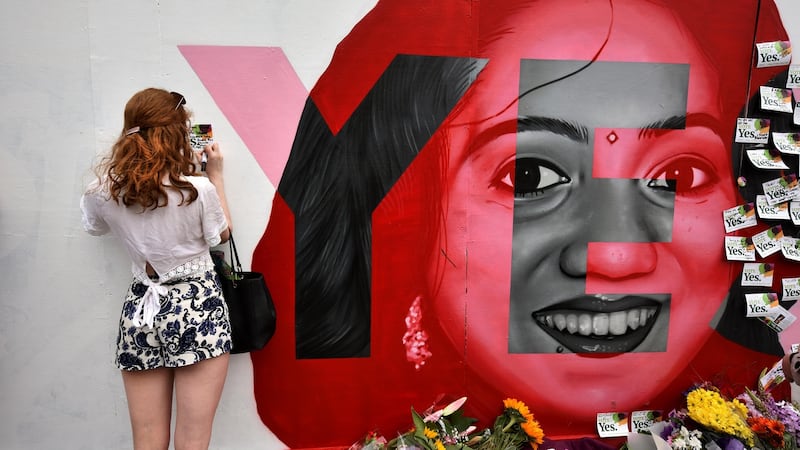
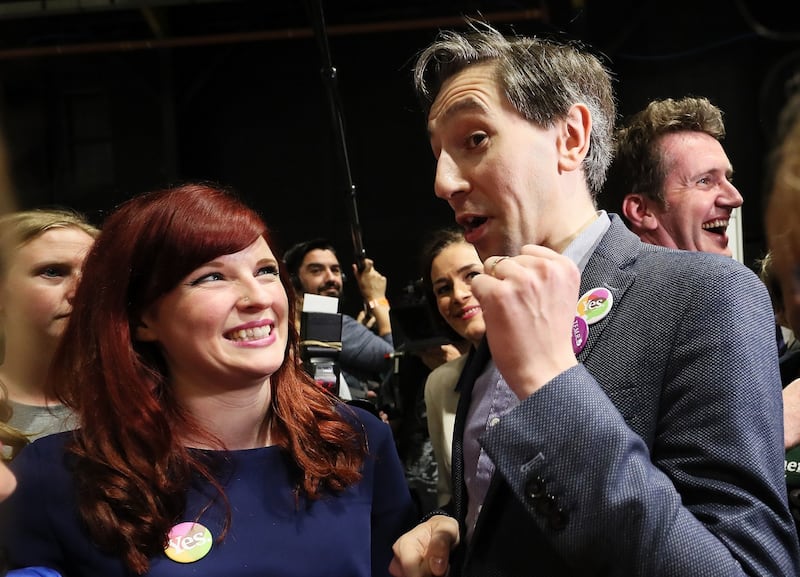
The Savita case (read Kitty Holland's report from 2012 here) was never too far away from people's minds during the eight weeks that this extraordinary referendum campaign seeped into Irish public consciousness on doorsteps, in the streets, in the media, or on the airwaves… right up to polling day.
It was an unusual referendum. All the comparisons and precedents only went so far. The 1983 referendum on abortion was divisive and nasty. This was, in the main, respectful.
During it, there was speculation that it could be a re-run of the 1995 divorce referendum, where a tight result, helped by bad weather in the west of the country, emerged on the day as did a sharp Dublin/rural split.
Neither materialised. This time, the rest of the country followed Dublin’s lead. The Yes side’s campaign shared themes with the same-sex marriage referendum in terms of strategy and approach.
Unlike then, there was a real, vocal, determined and organised opposition, but this could not prevent the landslide that first emerged in late-night exit polls on Friday.
And another signal achievement this time was that far from shying away from debate, or being turned off by it, the Irish public engaged with the issue more deeply, more intensely than at any time in the past, including 1983.
1. Beginnings
Savita Halappanavar was also the start of it. Her death almost six years ago planted the seeds for a campaign that would totally usurp, not just the Eighth Amendment outlawing abortion, but also a core tenet of Irish society that had set Ireland apart from all our neighbours for over a generation.
The immediate response to her death in late 2012 was the Protection of Life during Pregnancy Act, enacted in early 2014, which led to a serious split in Fine Gael. For those like Ailbhe Smyth, who had spent a lifetime campaigning for change, that law - which caused such a clamour at the time - was not sufficient.
“A few of us got together in August 2013,” said Smyth. “We needed to expand beyond that and make the argument that this was an issue that was far from settled.”
In September 2013, 12 organisations came together to form the Coalition to Repeal the Eighth Amendment.
Many of them reluctantly concluded despite doubts and concerns, that there were no workable alternatives to 12 weeks unrestricted abortion
The anti-abortion movement was also very sensitive that a big battle was looming. Niamh Uí Bhriain of the Life Institute recalls a round-table discussion in October 2015 about all the confusion around the issue of abortion since the death of Savita.
“We thought it would be a good thing to get the movement organised and trained, get volunteers experienced in canvassing, and mustered a massive ground campaign.
“Our key strengths, unmatched by the Yes campaign, is that we had thousands around the country, up to 100 in each constituency.”
And so both sides had already started a proxy war.
The evolving politics on the issue was also not lost on the anti-abortion campaigners. In the last Dáil there had been a series of Bills from left-wing TDs. However, after 2016, pro-choice TDs such as Kate O’Connell began emerging from the larger parties, also pushing for a referendum.
The Coalition to Repeal encouraged its supporters to make submissions, and contribute to the Citizens Assembly and also, later, to the Oireachtas Committee. For the other side, the view was very different. “When the Citizens’ Assembly was put in place, it was a pretend process with a prearranged outcome,” said Cora Sherlock of Love Both. “It was very clear it was intended to result in a referendum.”
As for the Oireachtas Committee, it quickly led to polarised responses and accusations of bias, especially on the basis that so few of the witnesses approached the issue arguing for the retention of the Eighth.
But that said, a number of TDs who went in with an avowedly anti-abortion stance changed their minds completely. Not least was Hildegarde Naughton, a Fine Gael TD from Galway who said the availability of unsupervised online abortion pills posed health risks that she could not stand over without being a hypocrite.
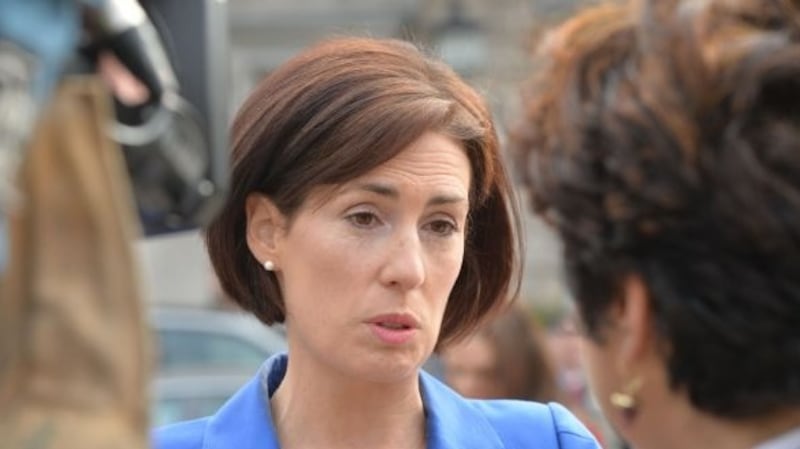
2. A referendum asking for radical change.
Polls had consistently shown there was majority support for repeal. But what form of repeal? Knowledge about the usage of abortion pills were a “game changer” for more than just Naughton.
Many of them reluctantly concluded despite doubts and concerns, that there were no workable alternatives to 12 weeks unrestricted abortion if the “hard cases” such as rape, incest and fatal foetal abnormalities were to be covered.
However, it was a big ask, and they knew it, to get voters to move from a restrictive abortion regime to one where a woman could get a termination up to 12 weeks, effectively, on request or on demand.
The anti-abortion camp thought the same. As a leading Save the Eighth figure in Cork, Becky Kealy, put it early on: “I think the whole 12 weeks thing, they shot themselves in the foot with that.
“It’s too extreme for the normal Irish person…I fully believe we are going to win. I did not believe it last summer but I am totally the opposite now,” she declared.
The Repeal campaign got a huge shot in the arm last January when, during the debate on the Committee’s report, Fianna Fáil leader Micheál Martin astonished everyone by moving to a position where he supported the proposal.
With a clear majority of his parliamentary party being socially conservative, Martin’s volte face caused consternation and the nearest thing to a split during his seven years as leader.
During February and March, Minister for Health Simon Harris and his officials worked on the policy paper, the precursor to the draft legislation that would give effect to the Committee’s recommendations - 12 weeks unrestricted, a much more restricted abortion regime between 12 and 24 weeks. The Government was working towards a polling day of May 25th.
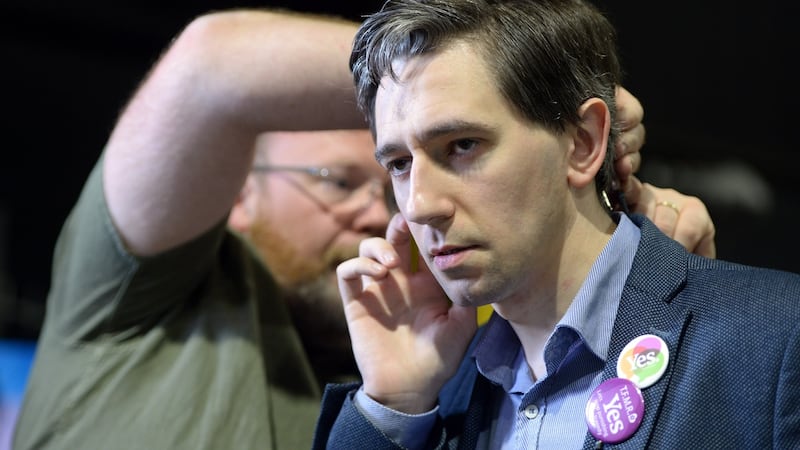
There was one hurdle and that was a Supreme Court decision on the rights of the unborn. The court had been examining if the the unborn child had rights other than the right to life, as set out in article 40.3.3 of the Constitution. On March 7th the court held the unborn had a right only to life.
3. The Referendum gets the green light
Things moved quickly then. The following day, the Cabinet agreed the wording for the referendum. On the advice of Attorney General Séamus Woulfe, it proposed the deletion of Article 40.3.3 and the insertion of a new clause stating that provisions may be made in law for the regulation of termination of pregnancy.
The following weekend, tens of thousands of people took part in competing Yes and No rallies and marches in Dublin over consecutive days. “They have roused a sleeping giant,” one speaker at the retain rally had warned.
By this stage, both sides had been roused. Three organisations - the Coalition to Repeal the Eighth Amendment, the National Women's Council, and the Abortion Rights Campaign - had amalgamated by January, with three co-directors, to become Together for Yes.
In early March, barrister Deirdre Duffy was drafted in as campaign manager with a former Labour Party official, Amy Rose Harte, as communications manager.
“I was the manager of a campaign with three organisations with four cultures, theirs and my own,” says Duffy. “From the start, there was pressure politically and from within the movement. Why the silence? Why is the No campaign gaining points? The media was putting a lot of pressure on us. We had no money and we needed to launch sooner than (we would have liked).”
By contrast, their opponents seemed to have hit the ground running. Two separate groups were involved, Love Both (which derived from the Pro-Life Campaign) and Save the 8th, comprised of the Life Institute, Youth Defence and 140 local groups. The former was a little more establishment, more closely aligned to the hierarchy, the latter more a grassroots campaign, with more direct messages.
John McGuirk, a communications specialist working for businessman and the founder of Libertas, Declan Ganley, came in. He immediately noticed it was not a media-friendly operation.
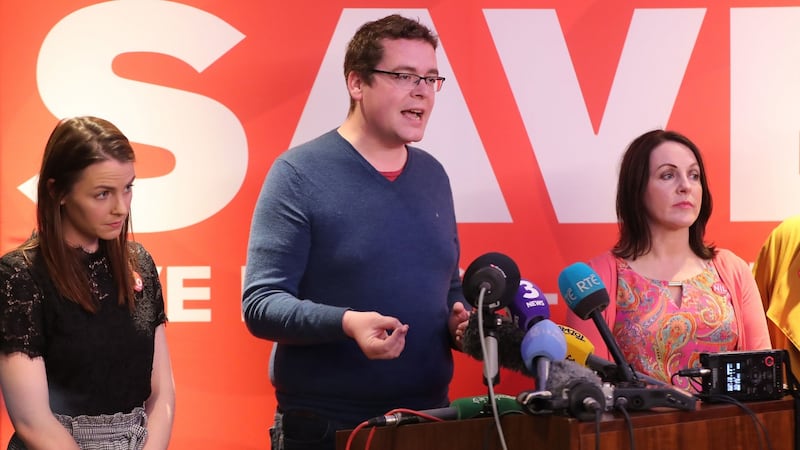
"There was a lot of talent but an alienation from the media. It was many years since a journalist had sat in this building (its HQ on Gardiner Place) or talked to people here. My two primary functions were to sharpen the message and build up media relations," he told The Irish Times.
Meanwhile, in Leinster House, after a week’s debate, the Dáil voted for a referendum. Some 32 TDs opposed the proposal, 21 from Fianna Fáil. Their votes were besmirched as “anti-democratic”. Among those who opposed the referendum was Sinn Féin’s TD for Offaly, Carol Nolan, who was immediately suspended from the party. Sinn Féin does not allow votes of conscience. But at the other side of the equation, the party’s leadership, particularly Mary Lou McDonald, openly campaigned for 12 weeks, even though its official policy was to allow abortion only for the hard cases of rape and fatal fetal abnormalities (FFA).
Love Both and Save the 8th faced some criticism for not pooling their resources. Sherlock from Love Both saw no difficulty with both maintaining their independence.
“The way we operate was we came together for rallies and big things like that. And then we do our own thing. That’s just the way we have worked and it has worked so well in the past . Why try to shoehorn everybody into the one brand?” she said.
They communicated daily and made sure there was synchronicity. David Quinn, who belonged to a third body, the Iona Institute, found himself taking on the role of conduit for both.
At Together for Yes, there was a lot of emphasis on focus group research. “We were very clear that we would build our messaging on the basis of the research,” said Ailbhe Smyth.
“At the launch, the three key messages were care and compassion and change, the three Cs. Around each one of those narratives have been developed and built.
“From the get-go we were very clear that what would help people was hearing the reality of couples and women who went through very distressing experiences.
"We knew how important those stories were from the marriage equality referendum and also from polling of social sexual issues elsewhere," Smyth told The Irish Times.
But the No side was quicker out of the traps. By early March they had posters and billboards up with the One in Five claim about UK abortions, and the claim that 90 per cent of pregnant women in the UK who get a Downs Syndrome diagnosis will have an abortion.
“They became huge talking points,” said Uí Bhriain. “I can’t understand where the Yes campaign was for that whole month and a half.”
“The on-demand nature of the proposal, comparing what happens in Britain to what might happen here. It was a message that alarmed people in the right way,” she said.
“…It was very important for us to explain to people that there was something else in the Bill and that is the relation that you can have an abortion up to six months on unspecified mental health grounds.”
Sherlock said that was certainly one of the highs of the campaign. “Pro life posters got up earlier than the Yes side. It helped to get our message across about one-in-five and the development of the baby in the womb.”
McGuirk also portrayed it as an early win, shaping the debate. “They drove a statistic into people’s minds and framed the debate. It forced a comparison with the UK where the Yes side would prefer to talk Portugal and Spain.”
Was Yes slow out of the blocks after its March 22nd launch? Said Smyth: “Other people had that perception. We always wanted to launch in March and then build up… We held back deliberately because in an exceedingly long campaign people get exhausted and fatigued.”
4. Crowd-Funding brings big fillip to Yes campaign
If the Yes campaign was lagging behind at that stage, a new development would change all that. Together for Yes began a crowd-funding campaign with the aim of raising €50,000 to buy posters. The response was overwhelming with ten times that being raised in a week.
“That was astounding,” said co-director Orla O’Connor. "We did not expect the volume of donations. The average donation was €30. It became much more than fund-raising."
It was an outpouring of women’s feelings on abortion, those who did not want to go public: “It allowed us to put the best possible campaign to the public.”
McGuirk also fully realised its significance: “It was very clear in the campaign that that was the ‘oh, fake’ moment for us,” he said.
“Up until then we could see no evidence of any enthusiasm on their part. That woke them up.
“Their campaign had not fired up their base at all. Our campaign fired their base up. I think their posters were anodyne and poor., all about care and compassion. Our focus groups showed they did not relate to them, the tone was not serious enough, too happy and clappy.”
By this stage, the ground war was in full operation. The No side had well over 3,000 people canvassing through the State. The Yes side was strong in Dublin initially but its numbers increased hugely all over the State as the campaign went on.
In the early stages of the campaign, both focused on their strengths. The No side emphasised the “extreme” nature of the proposal. The Yes side focused on the harm done by the Eighth, specifically through the “hard cases”. That it did by encouraging a large number of women to go public with their stories, and also through doorstep conversations.
Both sides had Achilles heels. No canvassers argued that abortions were not a solution for hard cases. That argument went down well with its base but did not persuade voters at doors, the undecideds who belonged to the Middle Ireland. Likewise, in the early stages, Yes canvassers had difficulty with the 12 weeks, with many not really wanting to grasp the nettle on it. Neither seemed to be making headway with a big block of voters who remained undeclared.
5. Don’t trust politicians
From the start, the No side, including some of its politicians, had pushed the line that the public could not trust politicians. It was cynical but it had purchase with some voters.
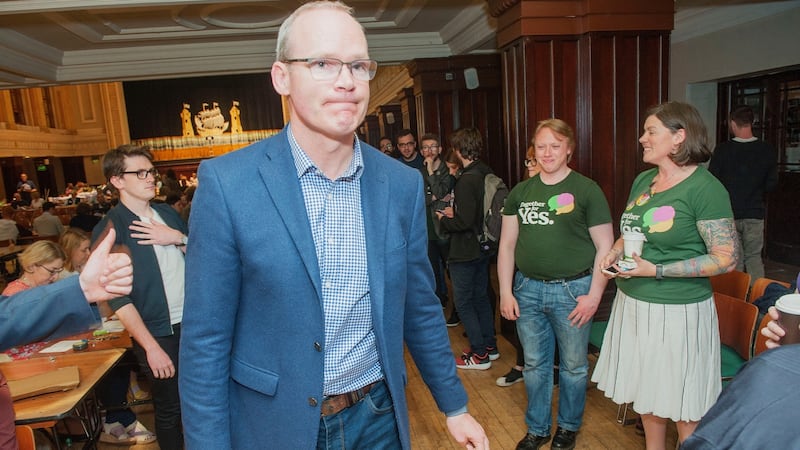
Almost as an illustration, over the weekend of March 26th, Tánaiste Simon Coveney performed an astonishing flip-flop. After stating only weeks earlier he could not support unrestricted abortion up until 12 weeks, he was now saying he did support it, after mature reflection.
It proved to be an uncomfortable few days for him. First of all, he argued for a two-thirds majority of the Dáil to prevent any future change to abortion legislation. As a long-standing TD, he should have known that was not possible under the Constitution. He then started talking about an obligatory nine-week scan to ensure the pregnancy was within 12 weeks. Simon Harris was forced to come out and explain what Coveney had really meant to say, that the scan was at the discretion of the doctor and not obligatory.
Immediately, it looked bad. Here was the living proof of a malleable politician. For example, Uí Bhriain commented: “Simon Coveney has four distinct positions on abortion.”
But, in the longer term it was not altogether as damaging for the Yes side. For one, it smoothed any potential damaging split between Taoiseach Leo Varadkar and Tánaiste. Indeed, later in the campaign Coveney would become one of the leading proponents of a Yes vote, along with the indefatigable Harris, Micheál Martin, Varadkar, Regina Doherty, Josepha Madigan and Mary Lou McDonald.
A lot of secrecy (on abortion) has been lifted. We cannot go back from this
In referendums in the past, politicians were seen as a liability. Not here. All could say they represented middle-ground positions, accepting the 12 weeks not readily, but with reluctance. They had no equivalents on the other side. The image of the No side for most of the campaign was one which wanted retention of the 8th at all costs, with no concessions. And that, included, for the most part its politicians.
David Quinn gave an unvarnished description: “Middle Ireland were homeless. One side wanted total repeal. the other side want total rejection.”
“Campaign groups do not attract middle-of-the-road people they attract people who are totally pro-choice or totally pro-life.
“Middle-of-the-road people do not get involved as they do not feel strongly enough about it.”
Another advantage the Yes side had was a bigger public buy-in from medical professionals. Communications manager Harte put huge emphasis on this. Its star performers were obstetricians and Masters of maternity hospitals such as Peter Boylan, Rhona O’Mahony, Cliona Murphy, Mary Higgins and Fergal Malone.
Said McGuirk: “They fought a clever campaign in the way they focused the issue on medical cases with doctors and obstetricians. Making it about the health of women was very smart and very affective.
“We spent half the campaign fire-fighting those battles.”
Boylan was everywhere early in the campaign and did well on the Late Late Show. He was effective in rebutting arguments about disability being a ground for abortion. It did come to light that screening for genetic conditions such as Downs Syndrome could be done by week 10 with 99 per cent accuracy. He responded (not altogether convincingly) that if diagnosis happened earlier in future, a legislature could reduce the time when abortion was permissible.
Another undeniable reality was the Yes campaign had much more people, if not resources. There were 20 people in communications, four in social media, and another 25 scattered around the HQ.
And the operation was elaborate. “Fine Gael and the other political parties were the gatekeepers for rebuttals because no one can rebut like a politician,” said Duffy.
“We wanted them to have that as part of their objective. It’s not that they were seeking us to direct them but they were very mindful that we needed us all to be on the same page.”
There were two “webinars” with volunteers each week, one on messaging and one on general information. There were multiple groups on the Whatsapp and Slack applications. And all the time, campaign manager, Duffy, and her team were getting analytics and feedback of digital reach, canvass returns with their intel on what was working, what was not working, and what people were saying on doorsteps.
6. Changing strategy
By mid-April, a few trends were becoming apparent. There was still a lot of uncommitted people on the doorsteps. There was talk of Shy Nos in Dublin and Shy Yeses downs the country. And the shape of the vote in rural Ireland was not strictly going to type. There were straws in the winds. Roscommon had been the only place in Ireland to vote No in the 2015 same sex marriage referendum.
Together for Yes, however, had launched a local branch with a healthy 70 people there. An anti-abortion rally in traditionally anti-abortion Mayo attracted only 300 people.
On April 20th, The Irish Times Ipsos MRBI poll was published. It disclosed a nine-point drop in support for repeal since the previous January. But Yes still retained a big lead, of 63 per cent to 37 per cent, when adjusted.
Naturally, the No side took more solace from the result.
On the doorsteps, there was a gradual shift of emphasis from the Yes side. “We needed to talk about the reality of abortion,” says O’Connor.
“For many people this was an uncomfortable conversation . Together for Yes was a grassroots campaign and that meant engaging the public in difficult conversations.
“It’s not possible to pretend it does not exist and put our head in the sand.
“A lot of secrecy (on abortion) has been lifted. We cannot go back from this,” she said.
If the message in the early stages of the campaign were soft and abstract, around care and compassion, now campaigners were talking about the reality of abortion, of the nine women who travelled each day to England, or the three who took pills bought over the Internet.
Canvassers put it to voters that if they never considered it for themselves, would they deny that choice to another woman in a crisis pregnancy? And in the last 10 days of the campaign, the evidence on the doorsteps was that many voters actually stated that was why they were voting Yes.
In an abortion campaign anybody who is campaigning on either side will have a strong view on the issue
At that stage, No campaigners were still arguing that abortion was not a solution for a rape victim, or for a FFA. It was not getting any traction. “If my daughter was raped, I’d be on the plane in the morning,” responded a woman in her 60s in Castleknock, who was against abortion on demand.
“It is fair criticism,” said McGuirk, making the same kind of point that Quinn had made. “In an abortion campaign anybody who is campaigning on either side will have a strong view on the issue.”
Nevertheless, he and his colleagues believed that they were still in the hunt.
“For us because the polls were putting us so far behind, we have seen an advancement all of the time,” said Uí Bhriain, “There has not been a point as of this moment in time that we felt we were sliding backwards.”
For a long period in the middle of the campaign, the campaign was overshadowed by the cervical cancer scandal. It was very hard to assess how it played out. By now, both Yes and No campaigns had nationwide roadshows of regional cities and towns in an effort to persuaded undecided voters. Katie Ascough of Love Both reckoned she had visited each county three times during the course of the campaign.
Perhaps the campaign had been going too long, but there seemed to be an inertia developing. People generally were not engaged and were not making their minds up.
Deirdre Duffy admits there were some worries within the Yes camp. “At this stage three weeks ago the pressure was intense because the Yes momentum was not there.
“It was still latent. It was not as visible as it should be. That was a moment of intense pressure. We knew people could be spooked very easily,” she said, adding the cervical cancer scandal did not help.
However, there were signals elsewhere. An astonishing 118,000 people registered on the supplementary register by the deadline of May 8th with huge queues in places like Galway.
Then emerged a bad moment for the No campaign. It had (with some justification) argued that the media were more prone to the charms of the other side. The daily No conferences tended to be more testy than the Yes ones. But it had taken out ads with Facebook and Google that would pop up on YouTube and other popular applications. In quick succession, Facebook announced a ban on foreign funding of ads, and then Google banned all ads pertaining to the referendum. An incensed McGuirk portrayed it as an attempt to buy the election and Mattie McGrath accused the Taoiseach of lobbying both companies, which he wholly rejected.
“It was one of the low points, the withdrawal of ads by Google which I considered anti-democratic,” said Sherlock.
She referred to a video of a young man, Martin McBreen, with Downs Syndrome which had had 600,000 views. “One of the main ways of getting it out was through social media,” she said.”
7. The TV debates
On the wall of Amy Rose Harte’s office in the Together for Yes headquarters on Mount Street was a whiteboard with the dates of the TV debates in large writing. These would always be critical coming so close to polling day.
The first big debate was on the Claire Byrne Show on RTÉ on May 14th, eleven days before polling. The best performer that night was Maria Steen from the Iona Institute and in a sometimes fractious debate, Peter Boylan, found himself coming under considerable pressure for the first time. Steen’s assured performance was undermined a little by jeering from No supporters, although People Before Profit TD Bríd Smith called Steen a liar and refused to withdraw the claim.
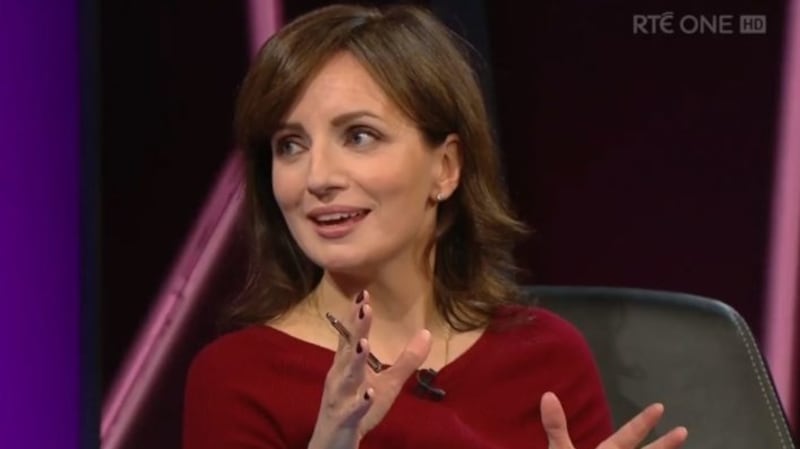
Eight days later the pendulum swung the other way. in the run-up to the RTÉ PrimeTime debate last Tuesday, the No side got involved in what was described as a “Mexican standoff” with the broadcaster.
Cora Sherlock and Peadar Tóibín were originally slated to represent No but Sherlock’s name was withdrawn by the No side in the run-up to the debate. The No side argued against the inclusion of a medical doctor, Mary Higgins, on the panel on the basis that she could use her status in medicine to “pull rank” in debates.
It argued it should be allowed put Steen up against her. RTÉ refused to allow Steen on the basis she had appeared in the other debate only a week beforehand. Eventually an unhappy compromise was reached where Tóibin debated Harris.
As it turned out, the pared-down panel of two worked hugely in Harris’ favour as he bested Tóibín with an assured performance, although he was over-strident tonally on occasion during the exchanges.
The Yes campaign had a marginally better night on TV3 the following night where Minister for Social Protection Regina Doherty was combative and Pat Kenny cut Steen short curtly on occasion, reducing her impact.
Possibly the most impactful contribution, however, was that given by a young woman in the audience, Saoirse, who gave a poignant account of her crisis pregnancy.
In between, there was an Irish Times poll on May 17th. It showed 44 per cent favouring repeal with 32 per cent supporting retention. The gap was closing but it was still raked towards Yes.
8. Endgame
The retain side was increasingly finding it difficult to deal with a flawed core of its campaign, how to respond to the hard cases.
In a big change of plan in the last ten days, it began to make a new argument that the Government had gone too far, and it should go back to the drawing board and come up with a Constitutional amendment for the hard cases. There was even a hashtag: #toofarforme.
The problem is that most leading campaigners on the No side did not agree with abortion in any circumstances other than under Article 40.3.3. In his head-to-head debate, when Tóibín suggested it, Harris was able to respond the Sinn Féin TD did not believe in it. Said Sherlock: “I can’t be hypocritical and say in a tragic case such as life-limiting cases an abortion should be had.
“I appreciate that there are many people who don’t agree with me, people who would say they would consider a limited proposal.
She continued: “The number of abortions for non-tragic cases, that exclude the cases you are talking about, (comprises) the vast majority (of abortions that take place in other countries).”
The No campaign was also relying heavily on its arguments that abortion would be allowed on vague grounds up until six months. It had a statement from 200 lawyers who were prepared to back up the claim.
“The strategic plan was to get attacked on it and then roll out lawyers and judges to say it was truth, said McGuirk.
“When they came out, the lawyers did not get the attention that should have. It undercut it slightly.”
In any instance, that also exposed a bit of a weakness in the No side. Most had opposed the 2013 Protection of Life in Pregnancy legislation and had warned of the consequences.
Meanwhile, the Yes side was able to fend off criticism by showing that only seven abortions had been carried out on suicide grounds since 2013, hardly a floodgate.
Between two-and-a-half, and three weeks ago, according to Duffy, people began to really tune in and make their minds up. The lull before that, she said, was when they were getting tired of a very long campaign, formally on the go since March.
Her returns were telling her that the undecideds were mostly veering Yes. “The thing about the returns is a very steady solid No but it is at a low number, at 19 per cent,
“Our Yeses are going to be better than we predicted. The Don’t Knows have been consistently breaking towards Yes,” she said.
Still, until two days before the vote, the No side believed it could be tight. Private polling analysis showed that it might win by one per cent. McGuirk spoke about a small deficit but said the people in the most rural parts of the country who had not been canvassed would vote No.
“We should be able to make that up. Unless rural Ireland has changed utterly,” he declared.
Separately, Sherlock said she disagreed with the analysis that momentum was with the Yes side.
Ailbhe Smyth said it was hard to call but Yes was “very encouraged with what we are getting back in the canvass returns in the past two weeks”.
On the final day before the broadcast moratorium there was a series of press events. Leo Varadkar led a large posse of Fine Gael parliamentarians into Merrion Square.
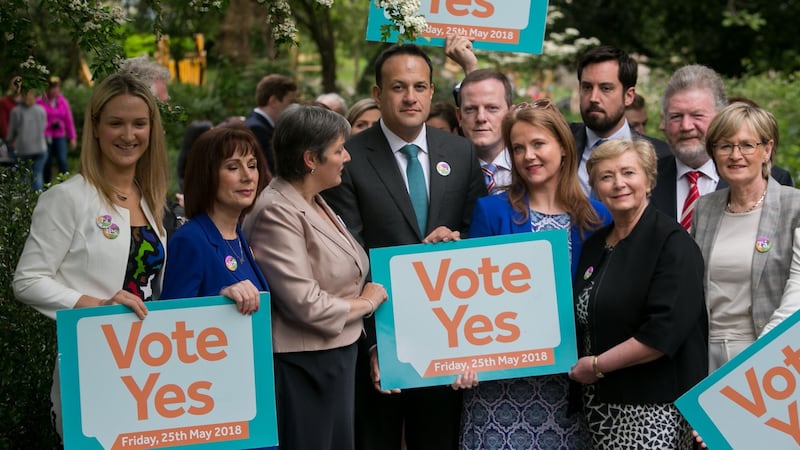
Over on the Kildare Street side a small gaggle of anti-repeal TDs gathered to make a final argument that the proposal went too far.
At that stage, everything - body language, argument, tone, mood, returns - suggested momentum had swung behind Yes.
“I’ve seen the first vote cast on the Aran Islands and it’s a No,” wryly commented barrister and No campaigner, Benedict O Floinn.
There would be few other moments of solace.
9. Lessons from 1983 and all that
“I grew up in an Ireland that was so different. It’s not just another country it’s another planet,” declares Ailbhe Smyth.
“People now are so confident and so competent and so able to be out there compared to then. We have an incredible generation of young people in this country
“That and the bravery of women who have spoken out and broken a silence. Whatever happens that silence is definitely broken.
“Women will not keep quiet about what is happening to them.”
Smyth takes the view there was remarkably little rancour and division. Across the ideological divide, Mc Guirk agrees.
“It is a very difficult and emotive issue. There was a lot of fear that it would be 1983 redux,” he said.
“There have been moments like that, but the fears were generally not realised.
“On a personal level I have a great respect for Ailbhe Smyth, She has relentlessly campaigned for many years.
“I think that the campaign that have run by Yes been dignified and respectful and would like to think we have done the same,” he said.
The loss is a huge body-blow for the losing side, and all in it who have devoted their lives to a cause which might be lost forever.
“If Irish people voted to legalise abortion on demand it would be for the first time I would be ashamed to be Irish,” said Uí Bhriain. “That is (coming from) somebody who is very patriotic and loves the country.
“It might be tempered with the knowledge that people did not understand what was in the proposal,” she adds.
For Orla O’Connor the campaign showed Irish people could have a conversation and be engaged. “It showed that we can discuss it and have a maturity on the issue and acknowledge the reality.”
So by Saturday afternoon, those smiling portraits of Savita Halappanavar dotted around Dublin no longer proclaimed an aspiration, or a pipe dream, or a change that people would have though inconceivable at the time of her death in 2012. Rather they were proclaiming the new reality after another truly historic referendum. Put very simply, Yes.












